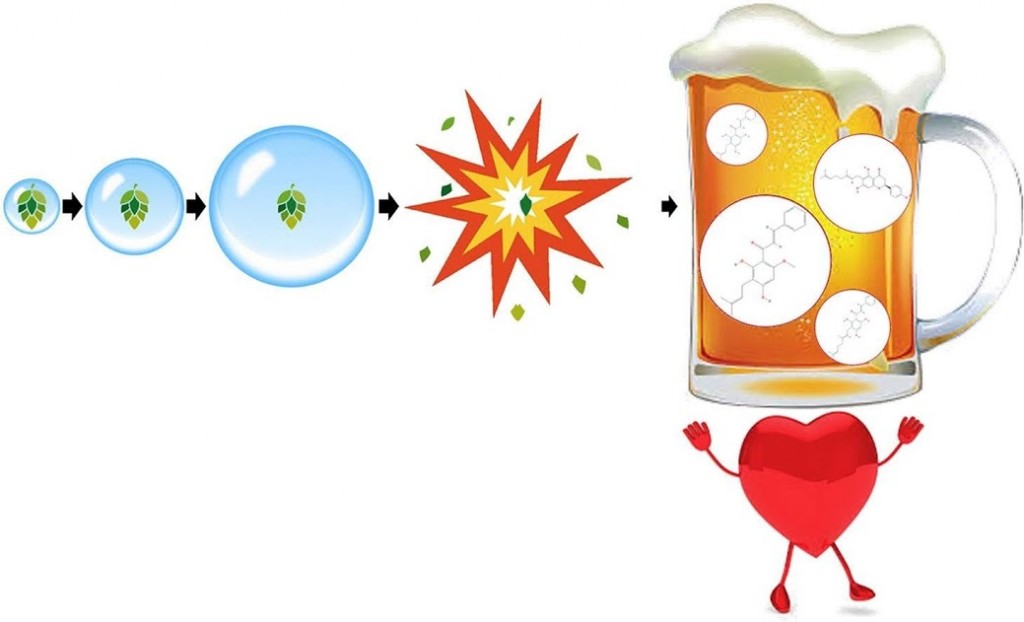A new way for beer-making: a group of top Italian physicists and chemists has developed the hydrodynamic cavitation.
This new technology has been developed by a joint team of Italy’s Research Council led by physicist Francesco Meneguzzo and subsequently transferred by Italy’s Research Council to an Italian enterprise.
The latter enterprise has realized and installed the new brewing plant at San Gimignano Brewery (Tuscany, Italy), a company making organic beers starting from local ancient grains.
Compact – the first industrial system has a 1,200 liter capacity – easily managed and flexibly adapted to any beer recipes, the new cavitation-based plant entirely replaces the existing technologies, unvaried since several centuries. Now, malt and grains are introduced as such because cavitation pulverizes them rapidly, whereas biling of the most is no longer required.
All crucial processes taking place during conventional boiling – from microbiological control to loss of dimethylsulfide through alpha-acid and arome extraction from hops – now take place at temperatures below 100 °C.
Thereby, the new process halves the production time and almost halves the energy requirements affording a beer which is richer in health beneficial substances such as prenylflavonoids, of longer duration and greatly reduced gluten content.
The new process, furthermore, reduces the repetitive steps of the conventional brewing enabling brewers to create new recipes by which new beers are continuously produced and marketed to meet the increasing demand of high-quality craft beers of different taste.
With a market of over 200 billion liter and turnover exceeding $593 million in 2017, beer is the most popular alcoholic beverage in the world. Generally prepared using four basic ingredients – malted cereal grains, hops, water, and yeast – beer is a refreshing fermented beverage whose origin dates to the early neolithic period.
The market is projected to exceed $ 685 million by 2025.
In 2015, the team, comprised of Lorenzo Albanese and Francesco Meneguzzo in Florence along with Rosaria Ciriminna and Mario Pagliaro in Palermo, demonstrated the energy efficient inactivation of Saccharomyces cerevisiae via hydrodynamic cavitation. In practice, the team showed that beer could be pasteurized at much lower temperatures than in the conventional thermal treatment.
Since then, these Italian scientists published the complete theory of cavitation-based brewing and the outcomes of the first experiments directly on pre-industrial scale, and then reported the discovery that the gluten content in beer obtained via controlled hydrocavitation was lower than in the best gluten-free beers on the market.
The team went on reporting again about the discovery that the new process can be successfuly applied to raw unmalted grains from typical old wheat varieties, leading to results comparable with traditional techniques but at a fraction of the cost, opening a new way to increase the profitability of craft microbreweries.



